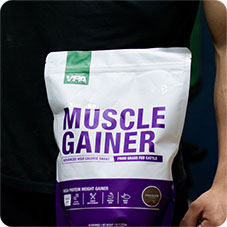Your Cart is Empty
The Benefits of Resistance Training for Glucose Metabolism
December 18, 2020 3 min read

Regular resistance training is something that we can all benefit from! Improved body composition, increased bone mineral density and reduced risk of falls in later life are just some of the many amazing advantages of this modality of exercise.
Something however that you may not have considered is how effective resistance training can be for the management of blood glucose levels within the human body. In Australia between 2017-2018 there were around 1.2 million Australians diagnosed with diabetes, exercise along with other lifestyle factors has an important role to play in minimizing the long-term impacts of diabetes related complications associated with progressive insulin resistance.
What is Insulin Resistance?
Insulin is a hormone produced by the pancreas within the human body that is involved in controlling the amount of glucose within the bloodstream by allowing glucose to be stored in muscle. In the case of insulin resistance, the muscle cells within the body are unresponsive to insulin leading to an inability to regulate blood sugar levels. Insulin Resistance is progressive in nature and in the case of chronic disease like type 2 diabetes can occur from accumulating unhealthy lifestyle behaviors like physical inactivity, smoking, excessive alcohol consumption and poor dietary habits.
How does resistance training improve blood glucose management?
Muscles are the primary storage space for glucose in the form of glycogen. The more muscle mass available means more glucose that can be stored! Subsequently this reduces the amount of glucose circulating within the blood stream. A single bout of exercise increases insulin action and glucose tolerance for 24-72 hours meaning insulin receptors are more sensitive to the action of insulin! Even after completing your session you are getting a continued removal of glucose from the bloodstream into the muscle as they attempt to replenish their fuel stores.
The Australian Guidelines for Physical Activity
-
Breaking up periods of prolonged sitting every 20-30 minutes
-
150-300 minutes of moderate intensity aerobic exercise weekly or 75-150 minutesvigorous intensity
-
Minimum of 2 resistance based exercise sessions weekly on non-consecutive days
using major muscle groups.
-
8-10 exercises per session, 2-3 sets per exercise and 8-10 repetitions per set
Where to Start?
Coming into the new year is always a great time to set some new goals or plans! These could be related to your career, finances, study or many other facets of your life. However, don’t neglect the value of investing in your own health and wellbeing. This doesn’t mean running marathons or moving mountains, something as simple as getting up more often, taking phone calls on the move or buying some hand weights can be an important step towards taking control of the modifiable determinants of your health. If you are just getting started, makeshift hand weights with bottles or water, bags of rice, sand or your own bodyweight can be suitable to acquire the benefits of resistance training mentioned above. If you are more advanced a gym setting may be necessary to provide that extra stimulus allowing you to continue pushing your capabilities. If you are living with or know of someone living with a condition like diabetes remind them of the benefits of regular physical activity for their health and how they can access an Accredited Exercise Physiologist.
Exercise Physiologists are allied health professionals appropriately trained to prescribe exercise for the treatment or management of chronic disease.
To access an AEP in your local area use the link below:
To access walking groups in your local area use the following link:
Active and Healthy – Find an Exercise Program Near you!
https://www.activeandhealthy.nsw.gov.au/program/area/Western%20Sydney
Sold out
Sold out
Sold out
Also in Featured

Creatine Capsules vs Powder — Which Is Better for Strength and Performance?
November 06, 2025 6 min read
Read More
Running Gels Explained — What They Are, How They Work, and When to Use Them
November 06, 2025 10 min read
Read More
Why Energy Gels Are a Game-Changer for HYROX Athletes and Functional Fitness Training
October 15, 2025 6 min read
Read More Recent Articles
- Creatine Capsules vs Powder — Which Is Better for Strength and Performance?
- Running Gels Explained — What They Are, How They Work, and When to Use Them
- Why Energy Gels Are a Game-Changer for HYROX Athletes and Functional Fitness Training
- Body Type Diet: How to Eat for Your Ectomorph, Mesomorph or Endomorph Build
- The Best Way to Take Creatine for Maximum Results (2025 Guide)
- Creatine Gummies Scam? What You Need to Know vs Powder
- 10 Proven Whey Protein Benefits (and Why WPI Might Be the Best Option)
- Third-Party Tested Supplements in Australia: Why It Matters More Than Ever
- 7 Best Protein Powders for Weight Loss in Australia (Updated 2025)
- Prebiotic Collagen Protein for Gut Health and Weight Loss: What You Should Know
${{amount}}













